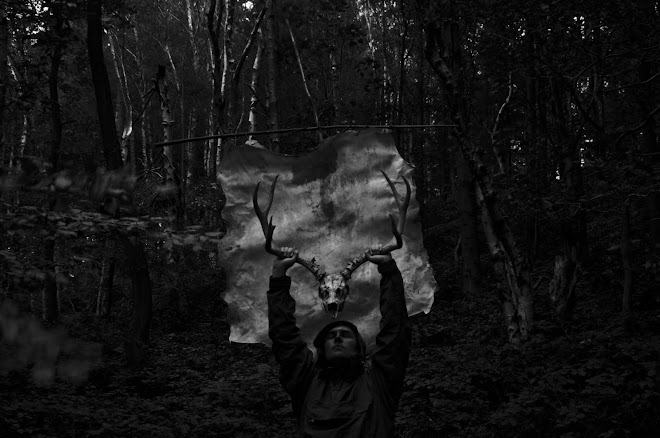


My visit to the woods had a dual purpose, both to sharpen my tracking skills and also to harvest poles and staves so I began to work my way back down the slope, towards a hazel thicket rising around a central oak. As I got under the oak and began to look around for usable hazel poles using the light coming in to silhouette the straight sticks I noted that somebody had used the area as a camping ground – this was easy to spot as they had helpfully left their empty bottles, tin cans and a stainless steel spoon amongst the leaf litter so other people could tell. These were not the only visitors to the site; evidently a fox had passed this way and had deposited its scat on and around an old plastic bag. It is tempting to anthropomorphise animal behaviour and this spoke volumes.
These castings were much smaller than the previous two finds at approximately ?? cm each and were a rich glossy black colour. The deposition site, slightly raised on a plastic bag was classic fox behaviour and by their gooey, mucousy texture they were fairly fresh. The scat broke apart easily to reveal a rough inner texture made up of seeds – the surrounding woodland had a thick ground cover of brambles and along the banks of the nearby beck elder berries hung down in heavy black bunches which this animal was evidently exploiting. The purple-black colouration from this diet of berries was even more apparent when the scat was opened, as was the hard shiny shell of a green acorn. Looking about beneath the tree I was able to find many green acorns that had been cracked and crunched but not eaten, it seems that even a hungry fox has its standards.
The smaller size of these castings and the overwhelming content of berries and bitter green acorns suggested that this was a juvenile animal, not yet proficient in hunting and managing to subsist through the late summer and early autumn by eating a vegetarian diet. With the year turning towards its end and the fruits of the hedgerows and undergrowth becoming scarcer this young fox will need to perfect its hunting tactics if it is to survive to see the next spring.
Having found and read the signs what can we make of the story? The three sets of fox castings found in my trip to these woods show three distinct diets each with an accompanying impact on scat morphology; although widely different each showed features, either in the choice of deposition site or the evidence from a kill that allowed them to be identified as fox. The wide variance in shape, size, colour and texture found in examining these droppings demonstrates that the received wisdom of books is no substitute for exploratory field work coupled with a good local knowledge of prey species and foraging opportunities.
I am of the opinion that scat # 3 was deposited by a juvenile animal, due to its smaller size and the deduction that an adult proficient in hunting would have at least some meat waste in it’s droppings – that this scat had no maggot infestation and contained such an unappetising food stuff as green acorn husks does not, in my view, point to an adult animal.
Scats # 1 and # 2 were found at opposite ends of the wood and differed widely - # 1 being very meat rich, less well formed and darker in colour with a very severe maggot infestation whilst # 2 was a classic cylindrical shape and was comprised mainly of compressed grey squirrel fur, with much less maggot infestation. With no usable tracks found around either deposition site to aid in identifying individual animals by their gait or size we are thrown back on supposition and deduction using local knowledge.
My feeling having walked the trails and known these woods since childhood is that they are from two different animals, Scat # 1 from an adult fox having its range in the woods and fields around Coldstream Farm and doing very well eating game birds and Scat # 2 from an adult fox with a range centred on the spruce covered pit heap with a skill for catching grey squirrels on the ground. Of course this could be wrong and we have only one animal with a very varied diet – the answer will only come from more time spent in the woods.
Top: Scat # 3 deposited on litter on woodland floor
Middle: Scat # 3 opened, the berry seeds can clearly be seen
Bottom: Vulpes vulpes

No comments:
Post a Comment